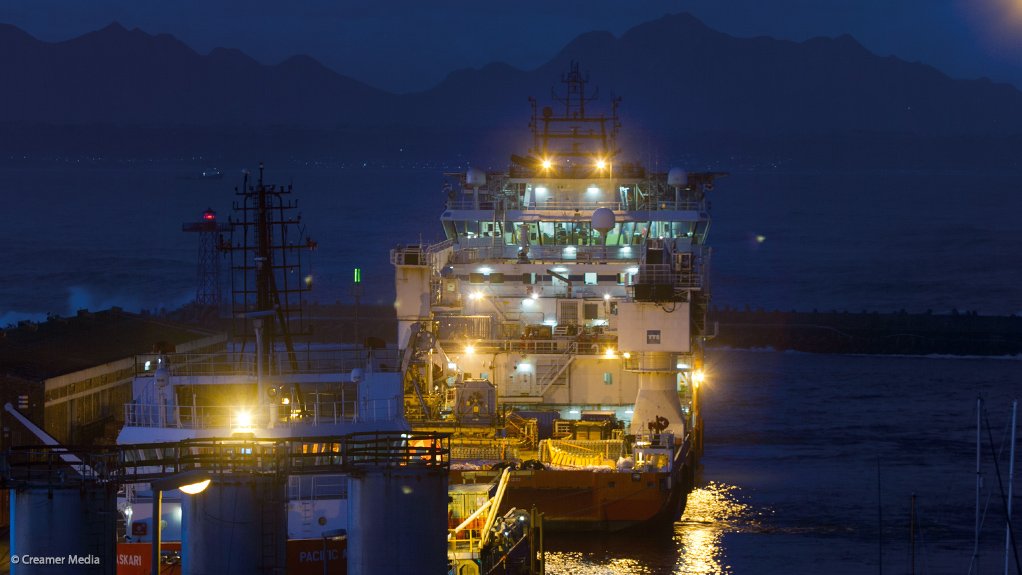Executing Africa’s new maritime strategy will be difficult, warns ISS
The potential trillion-dollar economy surrounding Africa’s oceans, lakes and rivers is under threat, says Institute for Security Studies (ISS) researcher Timothy Walker.
Thirty-eight countries in Africa share a combined coastline of more than 26 000 nautical miles (47 000 km).
More than 90% of Africa’s trade is seaborne, with fishing contributing to food security for more than 200-million Africans, while vast oil and gas potential lies offshore.
“In a kind of sea blindness, much of Africa’s focus has for long between locked on land issues – on borders and resource conflicts ¬– leaving a void in the marine space that others were glad to fill,” says Walker.
“Globally, Africa is often seen as a blank space in terms of its maritime involvement. The continent needs to use its newfound peace and stability to build a sustainable blue economy, which is currently underdeveloped and threatened, partially because African states lack the ability to monitor and secure their waters.
“Africa’s seas should contribute to economic and environmental security, but are too often a story of stolen resources, drowning refugees and missed opportunities.”
Piracy remains a threat, while drug smuggling and illegal fishing are increasing.
Illegal, unregulated and unreported fishing is estimated to cost sub-Saharan Africa around $1-billion a year.
“In Senegal fishermen used to find fish three miles offshore. Now they have to travel 50 miles. Illegal fishing has truly diminished Africa’s resources,” says Walker.
Thousands of tons of hazardous waste are dumped at sea, he adds.
Africa has more than 100 ports, many operating below capacity. African-owned ships account for less than 1.2% of the world’s shipping.
AIMS 2050
However, the continent has plans to change to develop its blue economy.
Africa’s Integrated Maritime Strategy 2050 (AIMS 2050), developed by the African Union (AU) and adopted in 2014, outlines ways to protect and grow the maritime industry.
AIMS 2050 represents an important step towards securing Africa’s maritime interests, says Walker.
It encompasses aspects such as fishing, oil and gas, security, piracy, pollution, biodiversity, transport and harbours.
The strategy, for example, calls for increased marine education and awareness, and the development of an African ship-building industry, he notes.
It proposes a combined African maritime zone, while also emphasising capacity building in marine defence, scientific research, tourism, fisheries and ship maintenance.
It also envisages the establishment of a pan-African fleet, as well as the expansion of port infrastructure.
However, all of these goals are much easier written than executed, warns Walker.
No single African country can secure its marine domain on its own, and without the collective political will to put AIMS 2050 in place, non-African countries will continue to profit from the continent’s rich marine resources, he warns.
“So, while the continent now has a strategy in AIMS 2050, it has little capacity to execute it.
“A maritime strategy requires you to think more internationally. It requires the development of legal mechanisms and, as marine borders are fluid and oil and fish resources transnational, regulations between countries must be harmonised.
“Executing this strategy also means you need a radar network and a presence on the water, either in the form of a navy or coast guard of some sort. Also, as not every country can afford such a presence, you require inter-country cooperation.
“Ultimately you need to be able to protect your trade routes, your resources and your fish stocks,” explains Walker.
To date West African and southern African states has adopted maritime strategies, while East Africa has a strategy under development.
Comments
Announcements
What's On
Subscribe to improve your user experience...
Option 1 (equivalent of R125 a month):
Receive a weekly copy of Creamer Media's Engineering News & Mining Weekly magazine
(print copy for those in South Africa and e-magazine for those outside of South Africa)
Receive daily email newsletters
Access to full search results
Access archive of magazine back copies
Access to Projects in Progress
Access to ONE Research Report of your choice in PDF format
Option 2 (equivalent of R375 a month):
All benefits from Option 1
PLUS
Access to Creamer Media's Research Channel Africa for ALL Research Reports, in PDF format, on various industrial and mining sectors
including Electricity; Water; Energy Transition; Hydrogen; Roads, Rail and Ports; Coal; Gold; Platinum; Battery Metals; etc.
Already a subscriber?
Forgotten your password?
Receive weekly copy of Creamer Media's Engineering News & Mining Weekly magazine (print copy for those in South Africa and e-magazine for those outside of South Africa)
➕
Recieve daily email newsletters
➕
Access to full search results
➕
Access archive of magazine back copies
➕
Access to Projects in Progress
➕
Access to ONE Research Report of your choice in PDF format
RESEARCH CHANNEL AFRICA
R4500 (equivalent of R375 a month)
SUBSCRIBEAll benefits from Option 1
➕
Access to Creamer Media's Research Channel Africa for ALL Research Reports on various industrial and mining sectors, in PDF format, including on:
Electricity
➕
Water
➕
Energy Transition
➕
Hydrogen
➕
Roads, Rail and Ports
➕
Coal
➕
Gold
➕
Platinum
➕
Battery Metals
➕
etc.
Receive all benefits from Option 1 or Option 2 delivered to numerous people at your company
➕
Multiple User names and Passwords for simultaneous log-ins
➕
Intranet integration access to all in your organisation





















